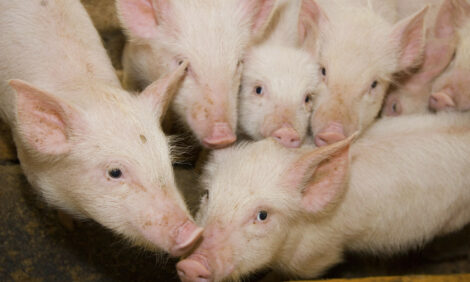



The Importance of Nitrogen for Growth in Pigs
CANADA - After energy, protein is the second most expensive nutrient in swine rations but utilization tends to be low.Retention of dietary nitrogen in pigs ranges from 30 per cent to 60 per cent of intake with much of this inefficiency the result of catabolism of excess amino acid/protein intake or unbalanced amino acid supply. This catabolism represents an energetic cost to the animal, reducing performance, and results in an increase in nitrogen excretion into the environment. Due in part to the contribution of dietary protein to total feed costs and the environmental impact of feeding excess protein, considerable research has been conducted to determine dietary requirements for essential amino acids.
While essential amino acid requirements are well-defined, there has been a general lack of research into requirements for non-essential amino acids and total dietary nitrogen. With the increased availability of affordable crystalline amino acids, it has become possible to feed reduced protein diets while maintaining essential amino acid content and growth performance.
However, the endogenous production of non-essential amino acids requires a source of nitrogen, therefore, in situations where total dietary nitrogen is limited, as could be the case in reduced protein diets with supplemental crystalline amino acids, essential amino acids will be used to meet requirements for non-essential amino acid production.
A concept familiar to ruminant nutritionists is the provision of sources of non-protein nitrogen (i.e., urea and ammonia) and reliance on production of amino acids by rumen microbes. In addition to dietary supplementation with non-protein nitrogen, it has been well established in both non-ruminant and ruminant animals that a proportion of urea produced from amino acid catabolism enters the gastrointestinal tract where gut microbes are capable of utilizing the urea for amino acid production.
This process, referred to as urea recycling, represents an important salvage mechanism to improve nitrogen retention during times of protein deficit, and presents an opportunity to both reduce feed costs and improve efficiency. However, the contribution of microbial amino acid production to meeting amino acid requirements in non-ruminants is not clear.
In order to more fully understand the utilization of nitrogen for lean gain in growing pigs, a series of studies were performed at the University of Guelph. These studies were designed to determine the ability of pigs to utilize sources of non-protein nitrogen under a variety of dietary conditions.
To read these studies and to continue reading the article, please click here.








